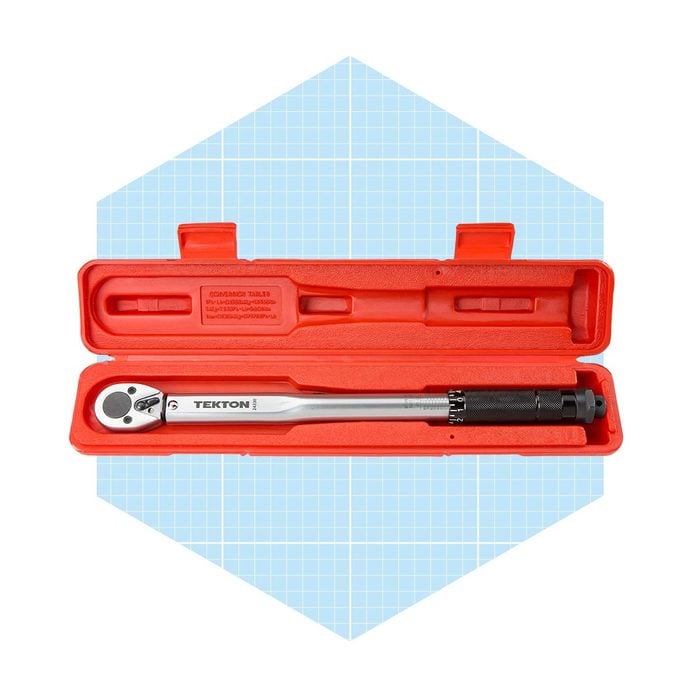
9
/
9
Tekton Micrometer Torque Wrench
Any home auto mechanic should have a torque wrench at the ready, and it’s an essential tool for tightening spark plugs just the right amount. The medium-duty Tekton Click Torque Wrench should be your go-to, with its 3/8-inch drive, reversing head and dual range.
What to Know About Changing a Spark Plug
Before purchasing spark plug removal tools, check your owner’s manual to learn what size spark plugs and the kind of ignition system your car has. To note: Coil Over Plug ignition systems do not use spark plug wires. On some V-6 engines the intake manifold may have to be removed to replace the spark plugs. Leave that to a pro. However, if you can access the rear cylinder head, with the right tools you can do this job yourself. Here’s what you’ll need—and why.
Spark plug wire pliers
Remove hard-to-reach spark plug wires while providing more protection for the wire boot. These pliers come in two designs, straight or offset (angled). Look for sturdy jaws and handles that are insulated and won’t twist.
Needle-nose spark plug pliers
A needle nose allow you to remove spark plug wire boots in tight places. Pliers with serrated jaws lessen the chance of damaging a spark plug wire.
Spark plug gap gauge
You’ll need this to correctly sets the “gap” between a spark plug’s side and center electrodes to the manufacturer’s specifications.
Spark plug sockets
Sockets specifically for spark plugs feature a rubber boot or magnet to hold a spark plug in place while removing or installing. They also protect the porcelain insulator. Spark plug sockets have thinner walls than a standard socket. They come with a hex head on the back end so you can turn with a wrench if you cannot use a ratchet or swivel extension to reach the plug. Many come with large markings to easily identify the socket size. A knurled non-slip surface machined into the outside of the socket offers a better grip to help you start spark plug threads by hand.
Spark plug sockets usually are 6-point to prevent rounding off spark plugs that are tough to remove. Some newer imports need extra-thin-walled, 12-point sockets to reach spark plugs hidden in tight corners.
Swivel (universal or flex-head) spark plug sockets have a flexible joint to reach around obstacles or get to spark plugs deep in the engine bay. Look for swivel sockets with a built-in extension that helps access difficult-to-reach spark plugs.
Ratchet wrench
This common tool is available in assorted drive sizes and configurations (short, standard, long-handled and flex-head). For removing spark plugs, a longer-handle, flex-head ratchet is the way to go, but a standard ratchet will also work. Ratchets with 72 teeth work better in confined spaces. “Quick release” models make removing sockets easier when your hands are greasy.
Torque wrench
This tool should be your go-to for tightening spark plugs, especially in cast-aluminum cylinder heads. Although a flex-head torque wrench is best for installing spark plugs, a fixed-head torque wrench will also do the job. Look for a “click” style torque wrench that can be felt as well as heard when the proper torque is reached. These all-metal, reversible wrenches are also easy to adjust and read standard and metric scales.





